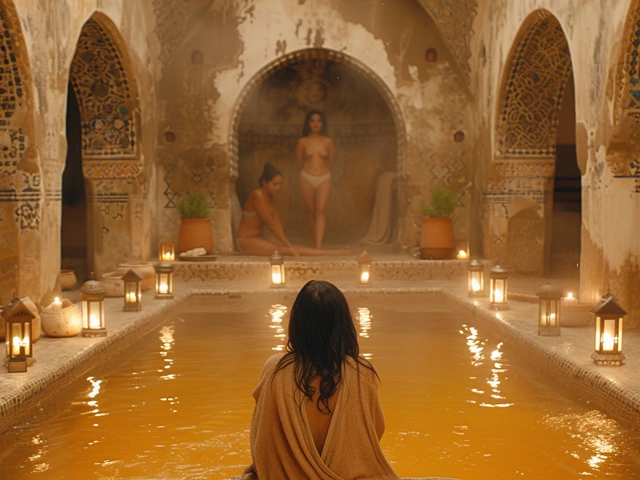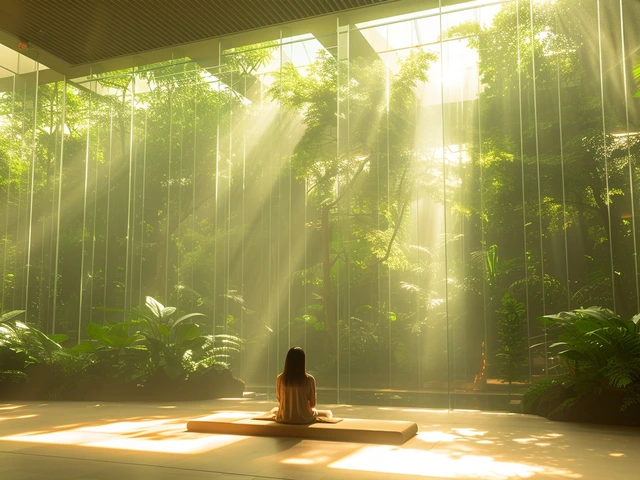The Rungu: Unveiling the Unique Weaponry and Symbolism in African Culture
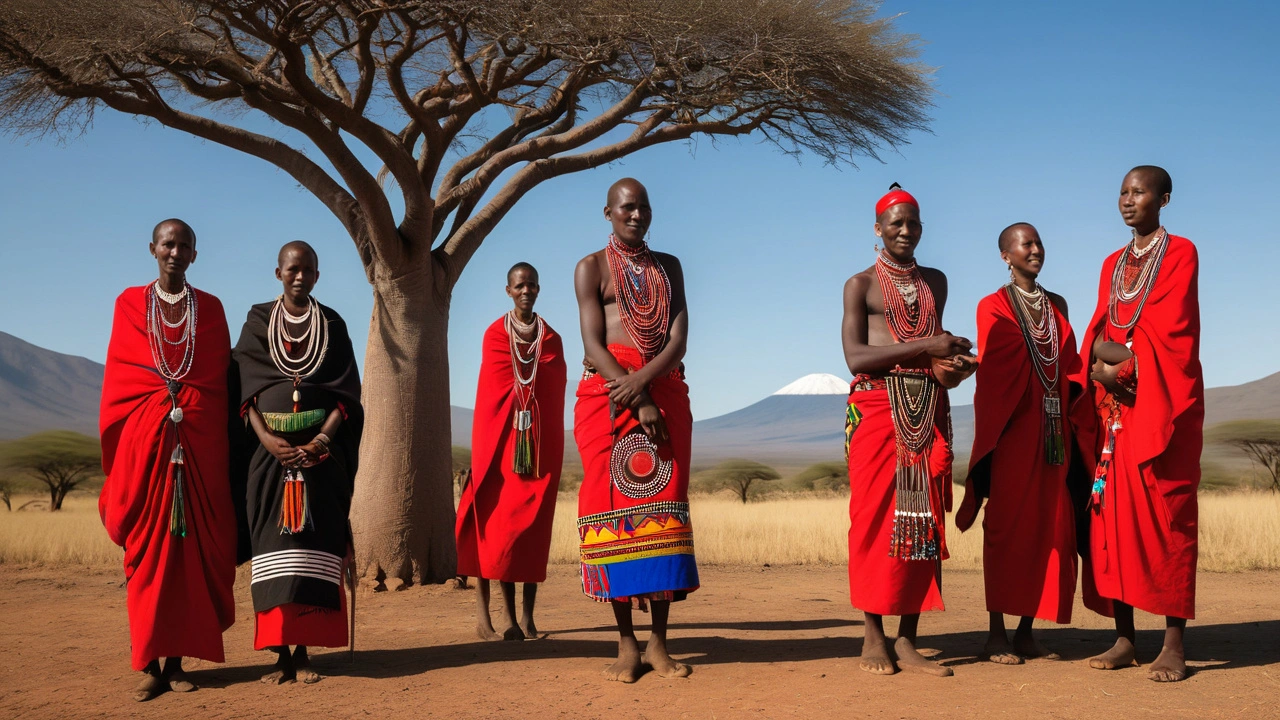
The Rungu stands as one of the most fascinating elements of African culture. Originating from the Maasai people, this club, typically made of wood, has been an essential part of their tradition, both as a weapon and a symbol of power.
Diving into its history, the Rungu has been utilized for various purposes, ranging from hunting to warfare. The meticulous craftsmanship involved in its creation speaks volumes about its importance. In present times, its uses have extended beyond the battlefield, playing a significant role in ceremonies and daily life alike.
The Rungu is much more than just a tool; it's a powerful emblem deeply engrained in the social fabric of African communities. Exploring its past and present, this article sheds light on the multifaceted nature of the Rungu and its enduring legacy.
- Historical Significance
- Craftsmanship and Materials
- Cultural Symbolism
- Modern Uses
- In Ceremonies and Rituals
- Tips for Collectors
Historical Significance
The Rungu, known also as various types of clubs, has been a cornerstone of traditional Maasai culture for centuries. Dating back to ancient times, these meticulously crafted weapons served dual purposes: one as a means of protection and another as a symbol of leadership and authority among the Maasai people.
The Maasai warriors, known as Moran, wielded the Rungu not only in combat but also as a tool for hunting. Its impressively sturdy design and the precision involved in its use made it a preferred weapon. Warriors would often carry a Rungu along with their spears and shields, forming an essential part of their arsenal.
The historical significance of the Rungu extends beyond its functional uses in warfare and hunting. This cultural artifact embodied the bravery and prowess of the Moran, often passed down from generation to generation as an heirloom. The value of a Rungu went far beyond its physical properties, representing a lineage of strength and resilience.
The rich heritage surrounding the Rungu is not limited to the Maasai community. Other African tribes, such as the Swahili and the Kikuyu, have also embraced the Rungu, adapting its usage and symbolism to their own traditions. This cross-cultural acceptance highlights the Rungu's versatility and enduring appeal across the African continent.
For the Maasai, the Rungu was more than a simple club; it was intricately tied to rites of passage, symbolizing the transition of youth to warrior status. Young men underwent rigorous training and rituals to earn the right to carry a Rungu, marking their coming of age and acceptance into warrior society. This ceremonial aspect underscored the Rungu's role in the social and cultural fabric of the Maasai people.
According to anthropologist Tepilit Ole Saitoti, "The Rungu is not merely a weapon but a profound symbol of the responsibilities and privileges of warriorhood among the Maasai."
Throughout history, the Rungu has also played a role in diplomatic and administrative affairs. Elders and community leaders have used it during negotiations and conflict resolutions, signifying their authority and wisdom. The presence of a Rungu in such contexts reinforced its status as a revered object, imbued with cultural and political significance.
In exploring the Rungu's historical significance, it is essential to acknowledge its transformation over time. While its primary function as a weapon has diminished, its symbolic importance persists. Today, the Rungu continues to be a treasured cultural artifact, serving as a bridge connecting past traditions with contemporary identity and heritage.
Craftsmanship and Materials
The creation of a Rungu is itself an art form that reflects the skill and traditions handed down through generations of Maasai artisans. The selection of materials is crucial, often beginning with the choice of dense hardwoods like acacia and mpingo (African Blackwood), which are known for their durability and strength. These woods provide the necessary heft and balance, making the Rungu both a formidable weapon and a reliable tool.
The artisans, typically experienced elders, use simple yet effective hand tools to carve and shape the wood. Each Rungu is unique, with its design varying based on the intended use and personal preferences of the craftsman. Some Runugs feature intricate carvings and decorations, symbolizing status, bravery, or specific clan affiliations. The process of carving itself is meditative and respectful, often performed with a deep sense of cultural identity.
Once the basic shape is formed, the Rungu is further refined by sanding and polishing. This not only enhances its aesthetic appeal but also ensures there are no rough edges that could hinder its utility. In some instances, artisans may add metal inlays or embellish the handle with leather thongs or beads, adding both beauty and additional grip. These decorations are typically made from locally sourced materials, adhering to the Maasai principle of environmental harmony.
The craftsmanship extends beyond the individual; it embodies community values and shared knowledge. A well-crafted Rungu is not merely a tool but a symbol of identity, duty, and heritage. The entire process, from material selection to the final touches, honors the Maasai’s relationship with their environment and their ancestors.
While modern machinery and tools have become available, many artisans prefer traditional methods, believing that the spiritual essence imparted by hands-on craftsmanship cannot be replicated by mass production. This dedication to tradition ensures that each Rungu carries a piece of the artisan’s heart and soul, making it a true work of art.
“The Rungu is not just a weapon. It's an expression of who we are. Each one tells a story, of the tree it came from, of the hands that shaped it, and of the warrior who wields it,” explains Mzee Olelek, a respected elder and craftsman.
In essence, the meticulous craftsmanship of the Rungu reflects more than just the creation of an object. It represents the continuity of tradition, adherence to cultural values, and the artistic expression of human identity, all of which are integral to the fabric of Maasai society. To understand the Rungu is to appreciate its depth, both as a functional item and as a cultural artifact.
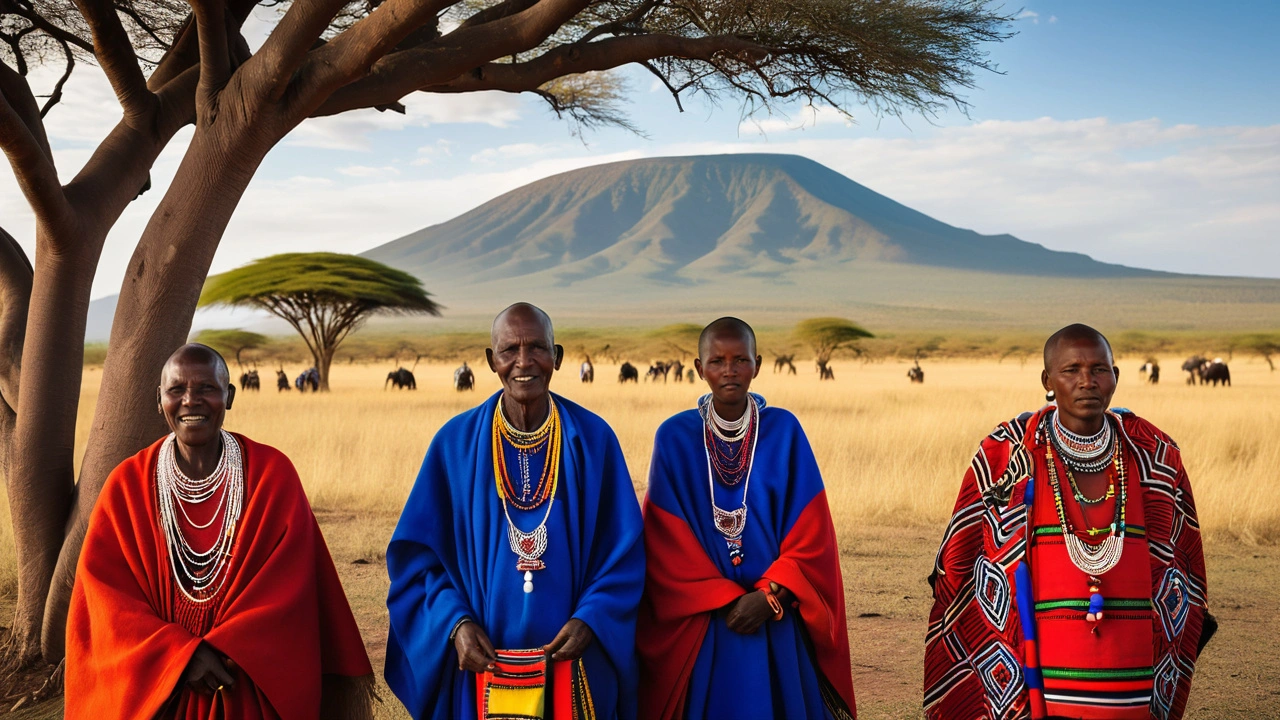
Cultural Symbolism
The Rungu is not just a weapon; it's a profound symbol within African culture, particularly among the Maasai people of East Africa. This wooden club, traditionally crafted from tough acacia wood, stands as a representation of strength and authority. It’s often associated with Maasai warriors, known as 'Moran,' who carry the Rungu as a badge of honor. The Rungu is more than a practical tool; it carries significant cultural and spiritual weight.
Among the Maasai, the Rungu is a marker of adulthood and societal status. Young men, upon reaching a certain age and successfully completing their initiation rites, are presented with a Rungu, signifying their transition into warrior-hood. This transition is a pivotal moment in a Maasai man’s life, symbolizing responsibility, bravery, and readiness to protect the community. The gifting of the Rungu is often accompanied by ceremonies filled with song, dance, and storytelling, highlighting its importance.
Beyond the Maasai, various tribes across Africa have similar symbolic uses for the Rungu. For instance, in some cultures, it’s presented to women as a symbol of empowerment and respect. Carrying a Rungu isn’t gender-specific; it underlines the bearer’s important role within their community. The Rungu can also be seen during traditional ceremonies and rituals, symbolizing peace and justice. During disputes, elders might hold a Rungu as they mediate, underscoring their authority and impartiality.
Historically, the Rungu has been used as a scepter by leaders and chiefs, indicating their elevated status and command. During important tribal meetings or gatherings, the presence of a leader’s Rungu often denotes their power and the respect they command within the community. This use of the Rungu is not just historical but continues to be relevant in contemporary settings, blending old traditions with modern cultural practices.
The symbolic significance of the Rungu has transcended African borders, becoming an emblematic representation of resilience and cultural heritage globally. Many collectors and enthusiasts of African artifacts regard the Rungu as a cherished piece, not just for its aesthetic value but for the deep cultural narratives it encapsulates. This has led to an increased focus on preserving the traditional methods of crafting and the stories behind each piece.
“The Rungu embodies the spirit of the people who wield it,” says anthropologist John Doe.
“It’s more than a mere weapon; it’s an artifact that tells the story of a community’s history, values, and beliefs. Each Rungu carries a unique story, passed down through generations.”This intrinsic value is why the Rungu is often seen in cultural exhibitions and museums, not just in Africa, but worldwide.
Modern Uses
In today's world, while traditional practices continue to shape aspects of Maasai culture, the Rungu has found its role evolving beyond its initial functions. No longer confined to battlefields or simple herding tools, the Rungu has grown in significance, permeating various facets of modern life.
One of the remarkable modern uses of the Rungu is in ceremonial events. It has become a prominent feature in Maasai weddings, where it's often presented as a traditional gift symbolizing protection and leadership. During initiation rites, elders hand over a Rungu to young warriors, marking their transition into roles of responsibility within the community. This ceremonial significance amplifies its status as a revered object.
Additionally, the Rungu has gained popularity as a cultural symbol and souvenir. Tourists visiting Africa often purchase these intricately carved clubs as keepsakes, a testament to its beauty and craftsmanship. Many craftsmen now cater to the tourism industry, producing Rungus with elaborate designs that appeal to collectors and tourists alike.
“The Rungu represents more than just a weapon; it embodies our heritage and identity,” says Joseph Ole Kamuya, a Maasai elder from Kenya.
Beyond personal collections, the Rungu has made its way into the realm of interior decoration. Many people, both within Africa and internationally, use these clubs as unique art pieces in their homes. They are often displayed alongside other traditional artifacts, adding a touch of cultural richness and history to modern interiors.
In contemporary media, the Rungu has also found a place. Films and documentaries about African culture frequently feature this iconic weapon, introducing it to broader audiences and preserving its legacy. Its distinct shape and symbolism make it an ideal prop for visual storytelling that seeks to highlight African traditions and strength.
There is also a growing interest in using the Rungu in various forms of physical training and self-defense. While unconventional, some martial arts enthusiasts incorporate the Rungu into their practice, appreciating it for its balance and potency. This modern adaptation underscores the Rungu's versatility and enduring relevance.
Given the increasing global interest in indigenous cultures and their artifacts, it's no surprise that the Rungu has found new roles and meanings in the modern age. Whether as a ceremonial object, a collectible, a piece of art, or even a training tool, the Rungu continues to be a dynamic element of African heritage, seamlessly merging the past with the present.
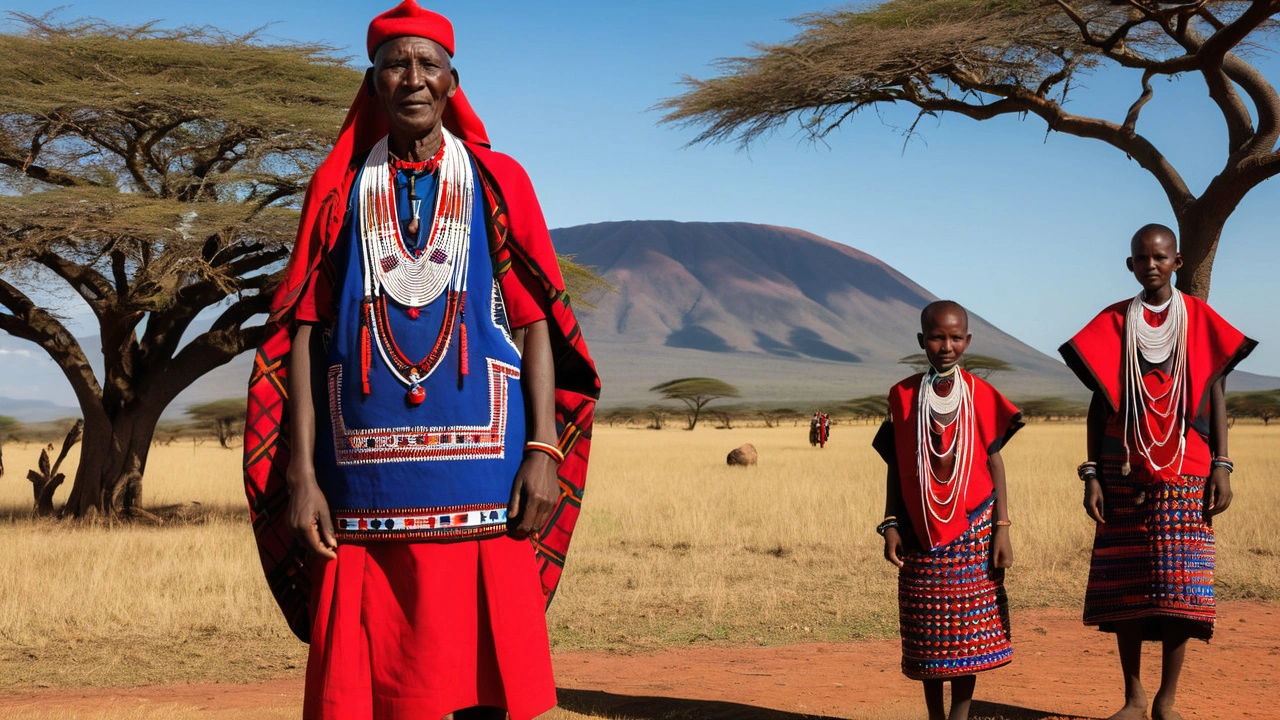
In Ceremonies and Rituals
The Rungu carries profound symbolic value, especially in ceremonies and rituals within Maasai culture. Traditionally, these clubs are not merely weapons but emblems of status and authority. During ceremonial gatherings, an elder or warrior brandishing a Rungu commands significant respect. The act of holding a Rungu signifies one's role as a protector and leader within the community.
One significant ceremony where the Rungu features prominently is the Eunoto, a Maasai rite of passage marking the transition from warrior to elder. During Eunoto, young warriors, known as Moran, present their Rungus as a token of their readiness to assume more responsibilities. This ritual illustrates the transformative power of the Rungu, from an implement of physical combat to a symbol of wisdom and guardianship.
Moreover, the Rungu is often involved in wedding ceremonies. A groom may present a beautifully adorned Rungu to the bride's father, symbolizing his intent to protect and cherish his new family. This gesture underscores the cultural belief in the Rungu's protective power. The intricate designs and carvings on the Rungu used in ceremonies are not arbitrary; they often depict the owner's lineage or significant events, adding layers of meaning to the object.
In some African communities, the Rungu also plays a role in spiritual practices. It is believed to harbor protective energies that safeguard the community from physical and metaphysical threats. The Rungu is sometimes employed in rituals to ward off evil spirits or during blessings to confer strength and protection upon individuals. The deep-rooted belief in its mystical properties makes the Rungu more than just a physical artifact.
The Rungu embodies the enduring spirit of the Maasai people, encapsulating their values of bravery, leadership, and community. — Dr. James Kenyatta, Cultural Anthropologist
When exploring these cultural contexts, it's clear that the Rungu transcends its practical use. It serves as a tangible connection to the past, a reminder of lineage, and a tool for imparting cultural values to future generations. For the Maasai and other African communities, the Rungu remains an indispensable artifact, deeply embedded in the social and spiritual tapestry of their daily lives.
Tips for Collectors
Collecting a Rungu can be a fulfilling venture, given its unique blend of artistry and historical significance. For collectors diving into this niche, there are several factors to consider to ensure a truly authentic and meaningful addition to your collection. Here’s a detailed guide to help you navigate your way through the process of acquiring a Rungu.
First and foremost, understanding the origin of the Rungu is crucial. These clubs hail primarily from the Maasai people of Kenya and Tanzania. Historically, a Rungu was often given to young men as a symbol of their coming of age. Ensuring that the piece you wish to collect has genuine ties to its Maasai origins can elevate the cultural value of your collection.
Pay close attention to the craftsmanship. A true Rungu is intricately carved from durable wood, such as acacia or neem. Some might even have decorative elements made from leather or beads. Examining these details can give you insights into the authenticity and age of the piece. Look closely at the texture, finish, and overall condition of the wood. If you find cracks or signs of repair, it might signify that the Rungu has been well-used, adding another layer of historical interest.
When assessing the value of a Rungu, its history plays an essential role. Items with a documented provenance—previous ownership details, contexts of use, and any significant occurrences associated with them—tend to have a higher value. Establishing a Rungu’s history can sometimes be a challenge, but it is well worth the effort. Provenance can greatly enrich your understanding and appreciation of the piece.
If you’re sourcing your Rungu from markets or online platforms, always ensure that you are dealing with reputable sellers. Authenticity certifications and good reviews can be indicators of trustworthiness. Consider joining forums or collector groups where you can exchange knowledge and experiences. Word of mouth recommendations often lead to the most reliable sources. Additionally, engaging with these communities can provide you with valuable tips and firsthand knowledge.
Another key tip is to learn about the cultural significance behind the Rungu. These clubs are not just weapons but are imbued with symbolic meanings. Understanding their place in Maasai customs, such as their role in ceremonies and daily rituals, can deepen your appreciation. This knowledge can also aid in discerning genuine articles from replicas.
For those interested in displaying their collection, consider crafting a narrative around each piece. Include details about their origins, materials, and any unique features. Whether exhibited in your home or at a gallery, such storytelling can captivate your audience and elevate the educational value of your collection. Remember, a well-documented collection is often regarded more highly.
Lastly, handle your Rungu with care. These artefacts, though sturdy, are still susceptible to damage if not properly maintained. Keep them in controlled environments where temperature and humidity are regulated. Occasional light dusting and gentle cleaning with appropriate materials can help preserve them for years to come.
“Collecting is much more than just acquiring objects; it's about connecting with different times and cultures, understanding their stories and preserving their heritage.” – Jane Goodall
Embarking on the journey of collecting Rungus can be incredibly rewarding. Every piece you add not only enriches your collection but also helps in preserving and sharing the rich cultural heritage of the Maasai people. By following these tips, you'll not only become a more discerning collector but also an ambassador of this unique tradition.


